| Part Number | 79.270.160.04 |

Easily the smallest and lightest in the series, LINA and its companion control element 750‑LFC bring the inherent linearity, low distortion, and exceptional power-to-size ratio of our line array technology to a wider range of applications and venues.
Taking advantage of the existing MINA footprint, LINA boasts new drivers and an updated amplifier and signal processing package that, along with an improved power supply, enables higher peak output.
Improvements in high-frequency headroom and lower distortion help LINA to faithfully reproduce audio with tremendous power, superior intelligibility, and extremely low distortion.
Whether single box or ground stack, LINA has an exceptional power-to-size ratio for a wide range of applications and venues.
750-LFC Control Element IntegrationIn most applications, LINA will be integrated with the companion 750‑LFC low-frequency control element for extending deep bass system performance down to 36 Hz. LINA and 750-LFC can be driven by Meyer Sound’s Galileo GALAXY loudspeaker management system which provides a powerful exclusive toolset for corrective room equalization and creative fine-tuning for a full range of applications. | Excellent Performance With Minimal ProcessingLow-frequency distortion from the dual 6.5-inch woofers is further reduced compared to MINA, aided by new internal venting and baffling to optimize performance. On-board signal processing has been upgraded for more power, now including optimized Native Mode – as first introduced in LEOPARD. | Stand-Alone, Vertical Pattern, Or SupplementalLINA is well-equipped for use as a single cabinet or for use with a small number of cabinets for applications requiring a precise, high-frequency vertical pattern. Single cabinets and short stacks are ideal for front fill and under-balcony applications. In addition to working as a standalone system, LINA can also be used as a supplemental fill loudspeaker in LEOPARD systems. | Compatible RiggingLINA includes Meyer Sound’s QuickFly rigging with captive GuideALinks, which are compatible with MINA, and allows easy setting of splay angles from 1 to 11 degrees. Rigging and transport options are shared with MINA and include the MG‑MINA/750‑LFC multi-purpose grid, MYA-MINA Yoke and MUB-MINA U-bracket, as well as the MCF-MINA caster frame and transport covers. |
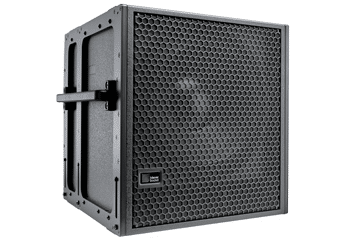 | 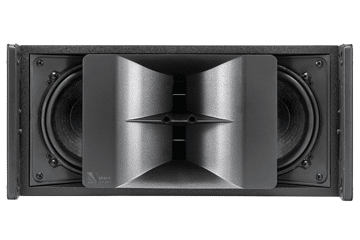 | 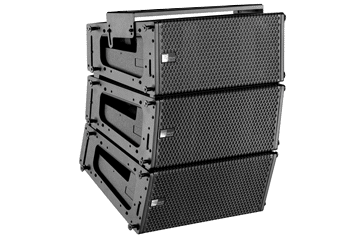 | 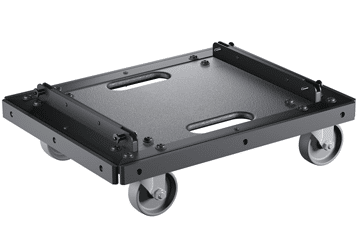 |
750-LFC Control Element IntegrationIn most applications, LINA will be integrated with the companion 750‑LFC low-frequency control element for extending deep bass system performance down to 36 Hz. LINA and 750-LFC can be driven by Meyer Sound’s Galileo GALAXY loudspeaker management system which provides a powerful exclusive toolset for corrective room equalization and creative fine-tuning for a full range of applications. |  |
Excellent Performance With Minimal ProcessingLow-frequency distortion from the dual 6.5-inch woofers is further reduced compared to MINA, aided by new internal venting and baffling to optimize performance. On-board signal processing has been upgraded for more power, now including optimized Native Mode – as first introduced in LEOPARD. |  |
Stand-Alone, Vertical Pattern, Or SupplementalLINA is well-equipped for use as a single cabinet or for use with a small number of cabinets for applications requiring a precise, high-frequency vertical pattern. Single cabinets and short stacks are ideal for front fill and under-balcony applications. In addition to working as a standalone system, LINA can also be used as a supplemental fill loudspeaker in LEOPARD systems. |  |
Compatible RiggingLINA includes Meyer Sound’s QuickFly rigging with captive GuideALinks, which are compatible with MINA, and allows easy setting of splay angles from 1 to 11 degrees. Rigging and transport options are shared with MINA and include the MG‑MINA/750‑LFC multi-purpose grid, MYA-MINA Yoke and MUB-MINA U-bracket, as well as the MCF-MINA caster frame and transport covers. |  |
Meyer Sound has been pioneering self-powered loudspeakers for professional installations and touring since 1995. We’ve committed to self-powered systems because we know they deliver unrivaled clarity, reliable performance, value, and ease of use.
If you’ve been thinking about investing in a self-powered system, you’ve come to the right place.
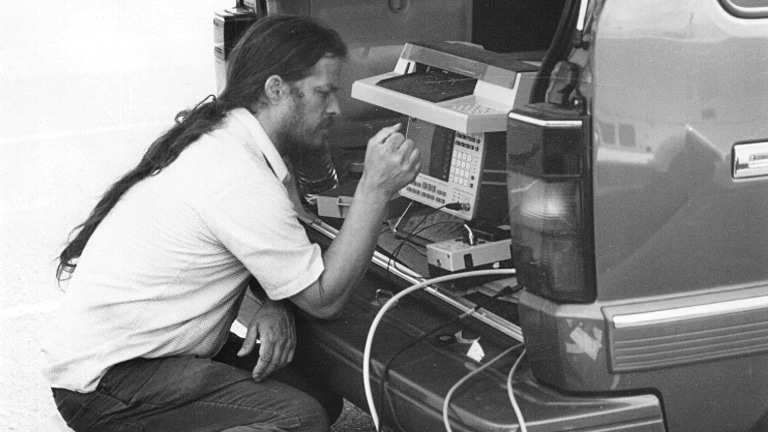
The story of self-powered loudspeakers is in many ways the story of Meyer Sound itself.
In the 1970s, sound reinforcement technology was inconsistent science at best, and at worst, led to show-ending failures. A young John Meyer, designing loudspeakers for San Francisco’s McCune Sound Service, wanted to bring quality and reliability to sound systems, and he knew the answer lay in self-powered loudspeakers. In 1979 Meyer founded his own speaker company; early Meyer Sound innovations include the iconic HD-1 self-powered studio monitor launched in 1989.
Today Meyer Sound offers a full range of self-powered sound reinforcement products. Meyer Sound systems can be found on tour with artists ranging from Ed Sheeran to Metallica, on Broadway and London’s West End, and in performance venues from the San Francisco Opera to the Vienna Philharmonic not to mention sports stadiums, cruise ships, and houses of worship around the world.
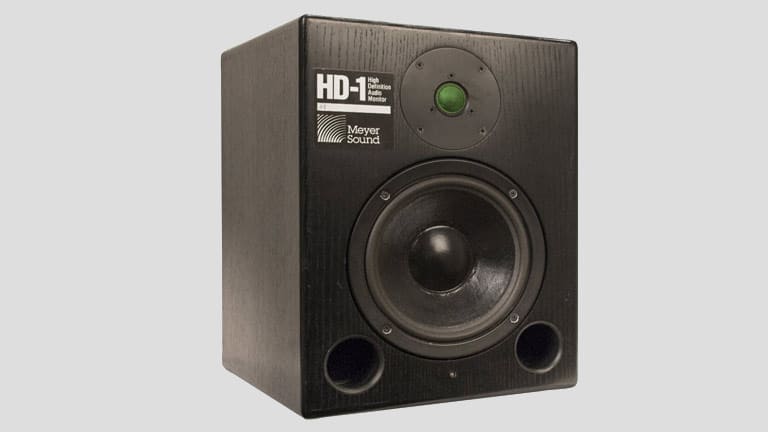
Self-powered loudspeakers offer several advantages over their passive counterparts when it comes to fidelity, reliability, and simplicity. The great part is, you’ll start to reap the benefits of a self-powered system before you even power up.
Ease of deployment: System set-up is so much easier when you have fewer components and fewer cables to worry about being miswired. Since self-powered loudspeakers incorporate amplification, you’ll never have to deal with matching speakers to amplifiers or connecting components. You don’t have to worry about calibration of gain and crossover setting which means more time focusing on the show. Eliminating amp racks doesn’t just streamline system deployment, it streamlines your inventory whether you’re a rental house or a road warrior. And when you consider that the average amp rack weighs nearly 300 pounds and takes up four feet of truck space, the efficiencies get even clearer. Let alone when you want to fly the amplifier racks to get closer to the speakers, often requiring more rigging points and more motors.
Predictable, reliable operation: Internal amplification is closely matched to drivers. Because individual components have been optimized during manufacturing, you can expect consistent sound from show to show. Built-in, factory-optimized protection circuitry provides extra assurance without degrading signal quality. And, when you have less equipment, you have less risk of failure.
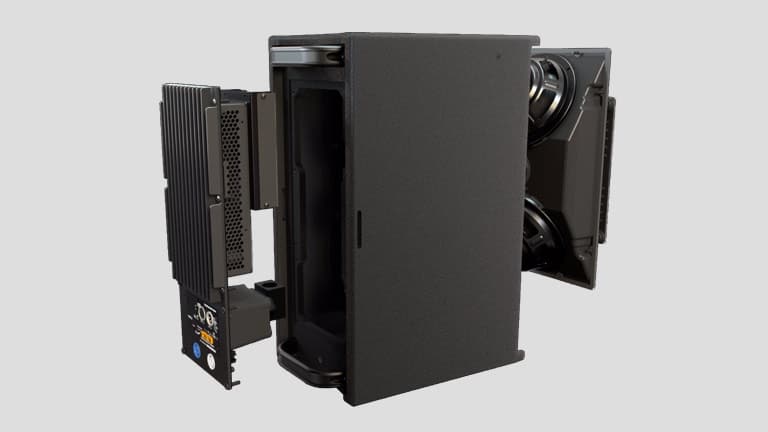
Better frequency and phase response: Because self-powered loudspeakers incorporate sophisticated processing, they are calibrated to exhibit optimal response curves in key performance parameters. Active crossovers are more precise, sophisticated designs, and bi-amped systems are time aligned, eliminating phase issues. The result? Accurate sound throughout the speaker’s range, at any volume level.
Unparalleled clarity: In powered monitors, internal amplifiers are precision-matched to drivers, delivering optimal power at all times for cleaner sound. And because amps are built into loudspeaker cabinets, there’s no need for long lengths of connecting cable, which can become prone to distortion and signal loss.
Tighter transients: Since self-powered loudspeakers have very short internal cables, amps inside can more effectively dampen driver mechanical motion, which leads to better sonic accuracy and tighter, crisper transients. (And, there’s none of the loss in levels and signal quality inherent over long cable distances.)
Certified Safe: Nothing matters more than the safety of your staff and customers. Because self-powered loudspeakers incorporate amplification, they must undergo rigorous testing by Underwriters Laboratories and other international organizations to ensure they operate safely and guard against the risk of fire, electric shock, and inadequate structural design. Enjoy peace of mind knowing Meyer Sound powered products are certified by FCC, UL, CSA, CE, and CEE the most stringent agencies in the business.
What about passive loudspeakers? At first glance, passive systems may seem like a bargain. But we already know that passive systems require more components and accessories than powered systems. Sonically, they exhibit potential for signal loss over distances, and it is very hard to ensure consistent, optimal sound and volume as amplifiers have many variables to consider when being matched to loudspeakers, such as cable lengths and gauge as well as the number of speakers connected to the amplifier.
Passive systems are often touted as easy to service. But because powered loudspeakers are so complex to design and build, self-powered loudspeakers usually represent the top innovations from leading manufacturers. Better quality translates to better reliability, which means fewer maintenance issues in the long run.
At face value, passive systems might seem less expensive and easier to maintain. But once you start adding in amps, cables, and other components not to mention increased transport and labor costs you’ll find that those savings just don’t add up to a better value.
Once you recognize all of the advantages inherent in self-powered loudspeaker systems, it’s easy to understand why the world’s top venues and productions rely on them to deliver consistently stunning sound.